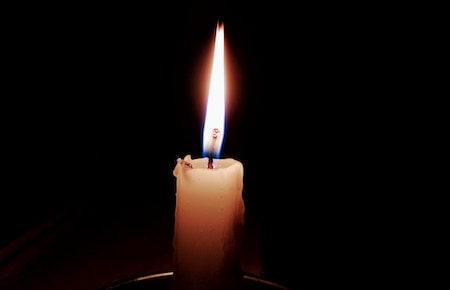
This famous solo piano piece by Satie is by turns gentle and sad. It is often used as a slow interlude at services with a somber theme, and at funerals.
G

This traditional spiritual speaks of leaving this world and moving on. Arranged here for full orchestra plus rhythm section. Moderate tempo, three verses. Could work well for a soloist, a choir, or a congregation.
D F A

This famous wedding march is originally from Felix Mendelssohn's suite of music to Shakespeare's play A Midsummer Night's Dream. Often played on pipe organ, this is a recording of the original orchestral scoring. A grand, triumphant piece, it is often used as a recessional at weddings. <br><br> Intended as a brief recessional after a wedding, this version ends after the main theme has been completely stated, at just under two minutes long. The last six minutes of the original piece, not included here, involve several new themes which alternate with the main melody.
C

An incredibly popular piece of baroque music, often played at weddings and graduations. This is the original arrangement by the German composer Johann Pachelbel, for three violins, cello, and harpsichord.
D

A Spanish-inflected version of this popular Jewish hymn, featuring acoustic guitars, bass, piano, and drums. The lyrics translate as, "How good and pleasant it is when brothers dwell together in unity." Mysterious and minor in tone, the two guitars evoke the sound of Ladino hymns and Sephardic Judaism.
Dm Fm Am

An bouncy acoustic version, featuring acoustic guitars, piano, fiddle, bass, and percussion. Fun for children and adults too! Six verses.
C D A

A traditional solo piano accompaniment to the classic gospel hymn. Great for either a soloist or choir, and the verses have built-in call and response sections too. The pianist plays stride left hand during the choruses, often in a ragtime style.
C Eb G

A front-porch style bluegrass version of this traditional gospel tune, featuring banjo, guitar, upright bass, fiddle, and drums. Fiddle introduction, then five choruses and four verses.
F Ab C

An instrumental version of the famous Bach aria Sheep May Safely Graze, recorded here with two flutes, cello, harpsichord, and violins on the melody. A beautiful and well-known work, it is often used to set a peaceful mood at the beginning of special events. For a backing track version that leaves out the violin part to make room for a soprano soloist, see track 1302.
Bb C G

A beautiful and well-known soprano aria from Bach's Hunting Cantata that sets a gentle, peaceful mood. Recorded here from Bach's original score with two flutes, solo cello, and harpsichord. This version is intended as a backing track for a soloist. For a complete instrumental version that includes the melody on violin, see track 1303.
Bb C G

One the most famous pieces of Baroque music, the beautiful Air from Johann Sebastian Bach's Orchestral Suite #3 in D Major is commonly performed as a prelude at weddings, graduations, and other special occasions. A later arrangement that made the melody playable on one string of the violin gave it the nickname "Air on the G String." Often arranged for soloists, this recording is from Bach's original score for string orchestra.
D

A soft, solemn orchestral karaoke arrangement of the military "lights out" bugle call. Often sung at military funerals, or on Memorial Day, to honor fallen soldiers. Prominently features strings, harp, and trumpet. Instrumental verse out front, and then three verses for singing.
C F Bb

A joyous, upbeat version of this patriotic children's song. Features a full marching band. Brief whistling introduction to set the key, three verses, plus a quick ending- long enough for children to "mind the music and the step" and strike a pose on the last note!
G E Bb

This classic American song from the time of minstrel shows will always be associated with the American South and the Civil War. Perfect for teaching children about the Confederate South. This is a simple, pastoral orchestral accompaniment with three verses.
Bb C G

An original orchestral backing track to this Shaker hymn of humility, made famous in Copland's Appalachian Spring. A uniquely American setting, perfect for Earth Day or Thanksgiving. Good arrangement for a congregation, choir, or small group of soloists. Often used with children's choirs because the text is simple and approachable. Three and a half verses, with the last half verse slower.
F D A